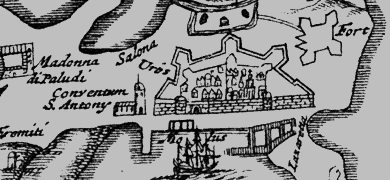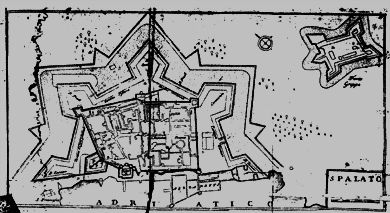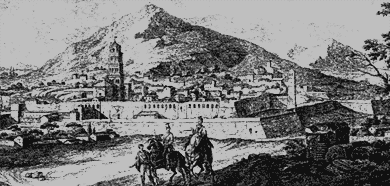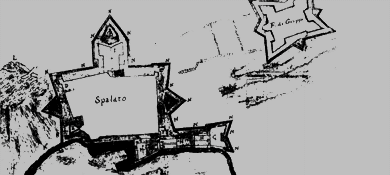In its narrow sense, the word bastion (French: bastion) refers to a structure with a pentagonal layout, not higher than the neighbouring parts of the fort, intended for the storage of heavy artillery. The construction of bastions marks a new era in fortification architecture which began in Italy from where, thanks to the activities of Italian masters in the 16th century, it spread across Europe. In the 18th century, the military construction sector was dominated by the French, from whose language the expressions for certain terms (such as bastion) were adopted. The area between the two bastions is called a curtain (French: courtine)….....
...he baroque walls of the City of Split are star-shaped with five fortified bastions. The outer stone face of the wall descends steeply to the ground and it ends in a distinguished round cornice. The promenade, the low wall and the parapet wall with an embrasure facing the courtain, are located above the cornice. The round guardhouses are nestled in the protruding corners of the fort. The interior of the walls are filled with soil (terrapiena). The gallery (contramina) is located along the wall of the soil embankment and it served to protect against miners who tried to enter the fortress by digging through the outer face of the wall at ground level....

...The history of the construction of the walls of Split is associated with several Venetian commissioners (provveditore) and their military engineers. Apart from their architectural value, they also show how much Split invested in its defense during the difficult time of the Ottoman peril. The blacksmiths and citizens of Split carried the soil from the fields with their bare hands and placed it in the walls, as their freedom had been threatened like never before...

...In 1656, Antonio Bernardo was appointed the general commissioner of Dalmatia. Having realized that Split would suffer serious defeat if the Ottomans were to stage a serious attack,, he ordered the construction of fortresses. His plan was backed by Camilio Gonzaga, the new general commissioner of infantry in Dalmatia who first suggested to the Venetian Senate to build fortresses around Split, and who then invited the several architects to carry out his plan...

...With the end of Ottoman peril, defence stopped being a priority, and due to this one part of the walls fell into private ownership and was assigned a new purpose. Today, these walls can be succinctly described as severely degraded: the remnants are damaged, neglected and left to further decay. When looking at the city as a whole, it seems that the Baroque fort no longer occupies the position that it deserves owing to its historical and cultural significance.

